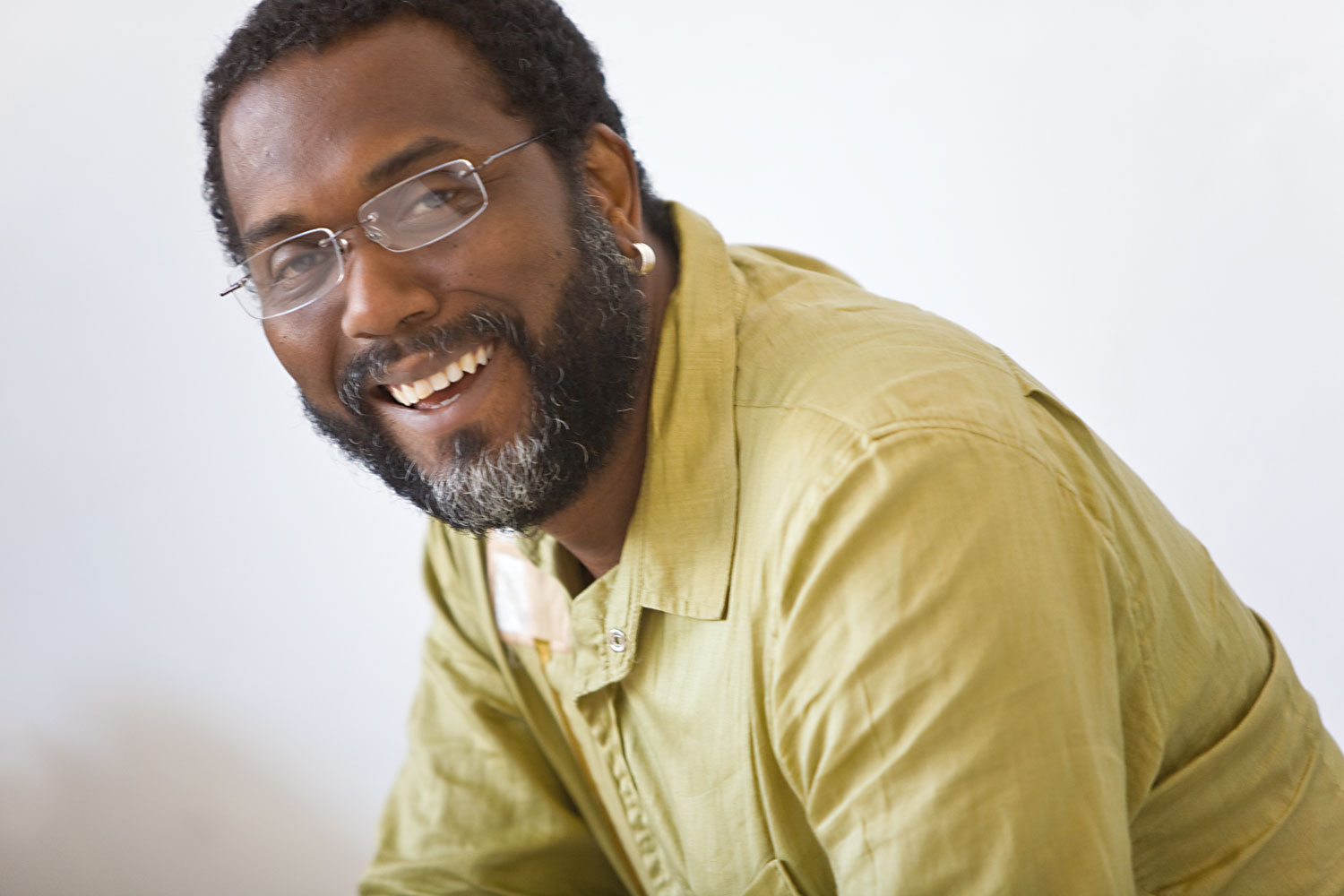It’s difficult to imagine The Cloth without its iconic appliquéd designs, but what is today a trademark of the Trinidad-based clothing label didn’t exist when the company was set up 23 years ago. The designs were initially silk-screened, but when the key printing person walked out, designer Robert Young decided to do something within his own capabilities. He put together colourful cotton patches and built images, some abstract, others figurative, on his clothing. It’s been 20 years since the first appliqué was stitched, and since then entertainers such as David Rudder, the late Andre Tanker, rapso artiste Ataklan and the Lydian Singers have popularised Young’s designs. The clothes have also adorned the backs of pannists from various steelbands, and even brides.
While the primary-coloured appliqués give the clothing a distinct Caribbean feel, they are much more than pretty patterns. The son of a former trade unionist, Young is very much an activist, and uses his designs rather like a placard to draw attention to issues and tell social and political stories.
“I see myself as an artist working with clothing, not a fashion designer,” he says. His activism was fuelled in part by his father, Joe Young, a former trade unionist, and even more by his mother, Grace Coggins, with whom he lived. Coggins was the secretary of a trade union and a founding member of a credit union. Young recalled attending union meetings with her, as well as visiting her on the strike lines. He recalled an incident when a woman returned a dress with a Carnival image in its design because there were appliquéd condoms sewn in. “She was a staunch Roman Catholic,” he laughed. “It’s about bringing issues to the fore. I bring up the stories, talking about what is and putting it into a Caribbean perspective.”
Young’s storytelling translates into the live presentations of his work. At Caribbean Fashion Week in Jamaica last year, his models, appearing in a segment called “Conscious Fashion”, sat on stools writing down all the things they did not like about the world, and 12 the Band from Trinidad, known for its conscious lyrics, provided the accompaniment. “The collection was called The Spot, a place to think, recollect oneself, make notes and move forward. We had dresses with big sleeves, symbolising strength to save the world. And the models’ faces were distressed.”
In 2006, Young did a collection in memory of his aunt the late Jean Coggins, who he says staged the first and only African folk ballet in Trinidad. Entitled “The Jean Coloured Life”, the collection was green and black, green being Coggins’ favourite colour, and played on the belé dance skirt, as well as elements with an old-fashioned flavour that Young had never used before in his designs, such as lace and flowers.
In the past he’s used as inspiration the definitions of pan (steelband) and limbo – both the dance and the state – put forward by the late Lloyd Best, an economist and influential political theorist.
“Limbo is creating space where none was provided, pan is creating beauty where there is none. So I just used a cotton linen, used that as a building block. All the appliqués were rectangles and squares and I used the Vévé design on the garment.”
The Vévé design, Young explained, is a drawing used in Haitian voodoo ceremonies to symbolise the gods.
“I used squares and circles. Some of the drawings looked like snakes to me, so I built snake-like appliqués. My appliqués usually have pictures, but these were just lines.”
An earlier collection commemorated the 200th anniversary of the Haitian Revolution, and Cuba will be the subject of the next.
Young, 44, is planning to base his next collection on the environment. He initially wanted to focus on Cuba, and will still use the island within that context to look at how Cubans have created survival solutions under a long-standing US trade embargo. The theme of biomimicry will be explored. It means, he says, using nature to find a solution to one’s problems. Chantal Esdelle, his wife of four years, and a musician and founder of a jazz band, Moyenne, will provide the score.
In a reference to the state of the global economy, Young has adopted the theme of bailouts for the way he’s been using different connections to help find spaces to sell his clothing, since The Cloth has no permanent home. Its retail store is a roving one, and for most of this year it’s been based at Alice Yard, a space for creative work and alternative entertainment in Woodbrook, Port of Spain. Young’s workshop is in Maracas-St Joseph, a quiet valley several miles from Port of Spain, but clothes are also produced in the city and other eastern towns such as Tunapuna and Sangre Grande.
Young’s artistry extends beyond fashion. He has designed for Peter Minshall for the sections “Jerusalem” in the Carnival band Donkey Derby, the “Twelve Ships” in The Odyssey, and “The Image and Likeness” in Tapestry. Young has also designed for a J’Ouvert band called Underground Press, and for the last 18 years, has led his own J’Ouvert collective, A Vulgar Fraction. In his band, masqueraders can use their creativity to produce their own costumes. This is Young’s response to the fact that making your own mas has become almost unthinkable in an age when costumes are mass-produced and Carnival bands sponsored by business corporations.
Young’s other work outside the realm of fashion is listed on his Facebook page. He’s been part of a YMCA mentoring project, the resource person for the Man-to-Man Project, and a delegate of the United to End Racism group at the UN World Conference Against Racism and Other Related Intolerance. This hands-on involvement isn’t a far stretch for Young, who once considered becoming a priest. That desire inspired the name for his clothing line, which he uses as his pulpit to make a difference to the world.
For more information: www.thecloth.net






















